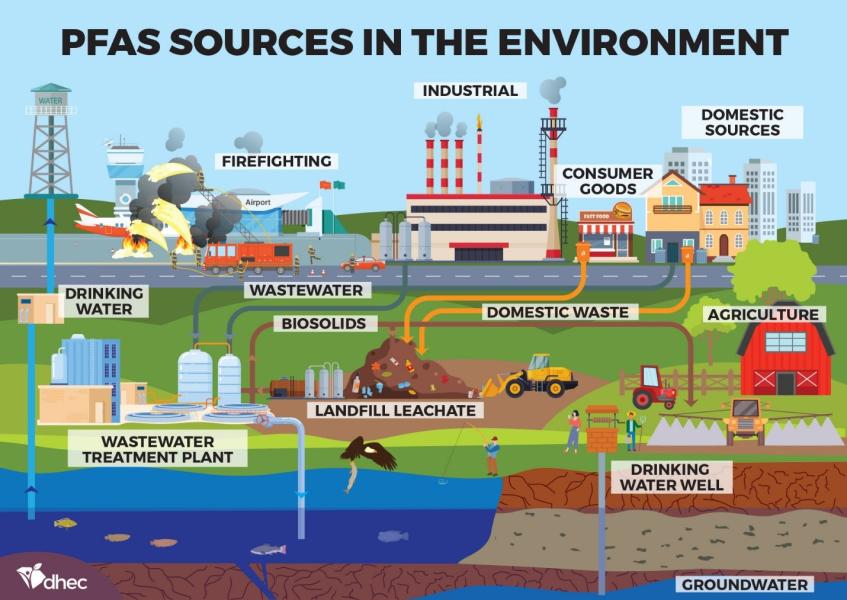<< Back to Clean Water Construction Grant Program main page
The Environmental Protection Agency (EPA) defines emerging contaminants (EC) as “substances and microorganisms, including manufactured or naturally occurring physical, chemical, biological, radiological, or nuclear materials, which are known or anticipated in the environment, that may pose newly identified or re-emerging risks to human health, aquatic life, or the environment”
EPA’s main EC categories from the SRF Implementation Memo follow:
- Perfluoroalkyl and polyfluoroalkyl substances (PFAS);
- Biological contaminants and microorganisms;
- Pharmaceuticals and personal care products (PPCPs);
- Nanomaterials;
- Microplastics/nanoplastics;
- 6PPD (from tire wear).

Graphic from the South Carolina Department of Health and Environmental Control’s (DHEC) website showing sources of PFAS, a prominent EC.
- Roadside bioretention to capture 6PPD from tire wear and microplastics;
- Wastewater treatment facilities upgrades;
- Water reuse with EC removal;
- Addressing ECs leaching from contaminated sites such as brownfields, underground storage tanks, and landfills;
- Capital investments to skim plastics, including microplastics, from surface waters;
- Emerging contaminant monitoring and analysis.
Minimum Eligibility Requirements
- Budget includes at least $250,000 in Clean Water Construction-eligible costs;
- Project contributes to the achievement of the objectives of the Clean Water Act, to restore and maintain the chemical, physical, and biological integrity of the District’s waters;
- Project site is publicly owned and located in the District of Columbia;
- Application includes proof of permission from the property owner;
- Project must include construction; however, funds can also be used for design OR a planning study anticipated to lead to construction;
- Application includes a feasible plan for maintenance of the structure, restoration, or planting that ensures continuing functionality;
- Application must present a project that can be completed within three-years. Alternatively, the project can be broken into phases that are funded consecutively, with each being completed within a three-year time period; and
- Projects must be voluntary, and as such, cannot be used to meet the stormwater management requirements of 21 DCMR Chapter 5.

